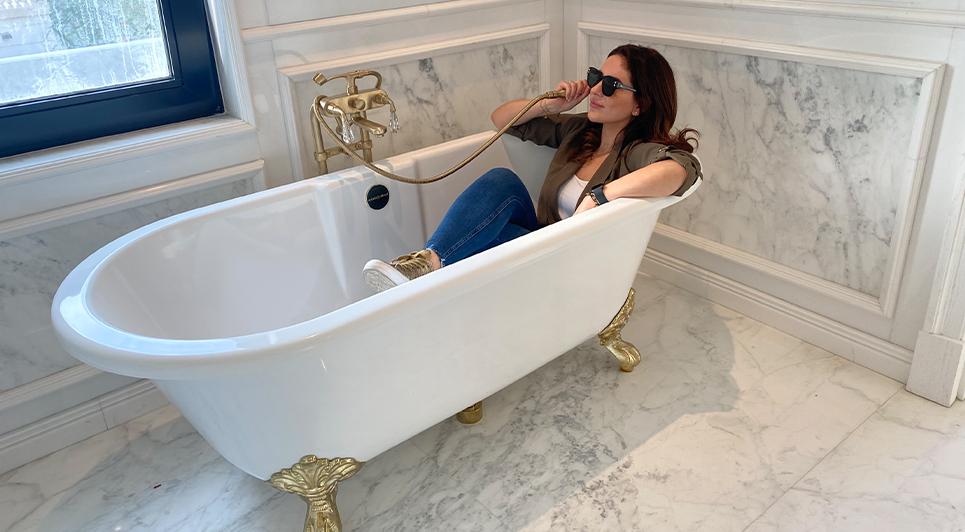
March 26th, 2022 / 4 min read
I have never had the talent of not speaking my mind. My opinions have always been present and I am vocal about them. As a perfectionist and as a person who passionately and genuinely cares about architecture, design and my contribution to those two fields, my opinions can sound a bit … what’s the word? A bit outspoken, for want of better word!
I struggle, as all people who work in a design-oriented field, with my clients when it comes to aligning on a vision and on the ideas being constructed. Across my decade & a half spanning career, I have been in situations where the vision, the art of the design and the financial compensation behind it have been compromised. In those moments, I thought to myself (as I am sure many designers and architects have), ‘Is this client really worth it?’
“Not many architects have the luxury to reject significant things.”
– Rem Koolhaas
I am a big fan of that quote, because I know that when I have the chance to build and create something brilliant, I would fight all the obstacles facing me on the road to see it turn from vision to solid reality. Not only do architects put in time, effort and sweat. We also put our soulful musings about the urban construction and the intricate meaning we discover in space into our work. So, some difficult clients, a limited budget, nagging crew members, etc. can be tolerable if the promised result is worth it.
But what happens when it is not & how can we ultimately develop the power of rejection?
First of all, one can only have the luxury of rejection when they’ve been in the industry for a long time. As a budding, up & coming architect, I would rarely have said no to potentially difficult clients. I had little to lose and I was still developing my value in the industry. Also, let’s get bleakly realistic, the bills are not going to pay themselves magically. Unfortunately, vision & passion alone don’t look good on a bank statement.
Secondly, just because you know that you should reject something, does not mean you should sometimes. Difficulties, foreseeing potential issues and realizing that this project will be a pain does not necessarily make it a bad project. In fact, some of my toughest projects proved to be one of the biggest learning experiences of my career. So, grab the bull’s horns sometimes, don’t just throw the red cloth and run…

And thirdly, arrogantly rejecting clients is not something that would generate a great word of mouth for an aspiring architect/designer. Keep in mind that our industry is one that is focused on subjectivity and client relations. Design is intricate and personal. People want to know, trust and genuinely connect with the person that, for example, is building their dream home. It makes the process personal, customized, curated. That is why you don’t want people to know you as ‘that architect that always says no.’
That being said, we go back to my opinions on rejection…
I believe that rejection is always viewed in a negative light. However, a positive spin on it occurs when you begin perceiving it as a natural part of optimized selection. Our projects are commitments that live in our minds and daily lives for 3 to 4 years, making them a massive statement on who we are as architects and where we are headed career-wise. Thus, they can either liberate you and make you escalate your craft or they can hold you back and create resentment towards the craft.
By selecting the right clients, I believe growth is a natural byproduct. The right clients give you the liberty to do what you do best, they allow for a synchronized working relationship that is built on synergy and good energy. As a believer in the energy of spaces, I am sure that the spirit and energy with which the space is built lingers within it.
Secondly, by rejecting the wrong clients, we are capable of freeing ourselves up for the right clients or for the process of bettering ourselves, developing our business, investing in our craft or in our personal lives. A little piece of hard-earned wisdom: It’s better to have a blank week than to do something that does not serve you.
And finally, I believe that rejecting the wrong clients is a catalyst towards building the type of portfolio and company profile that you deserve. This selective approach allows you to be in the market of your choice and to stop the chain of similar clients (one bad apple gives you a whole bad crate). The more selective you are with the process, the more accurately you shape up the type of business you want to be building.
So, I guess, no is not such a bad word. Use it wisely.
N.